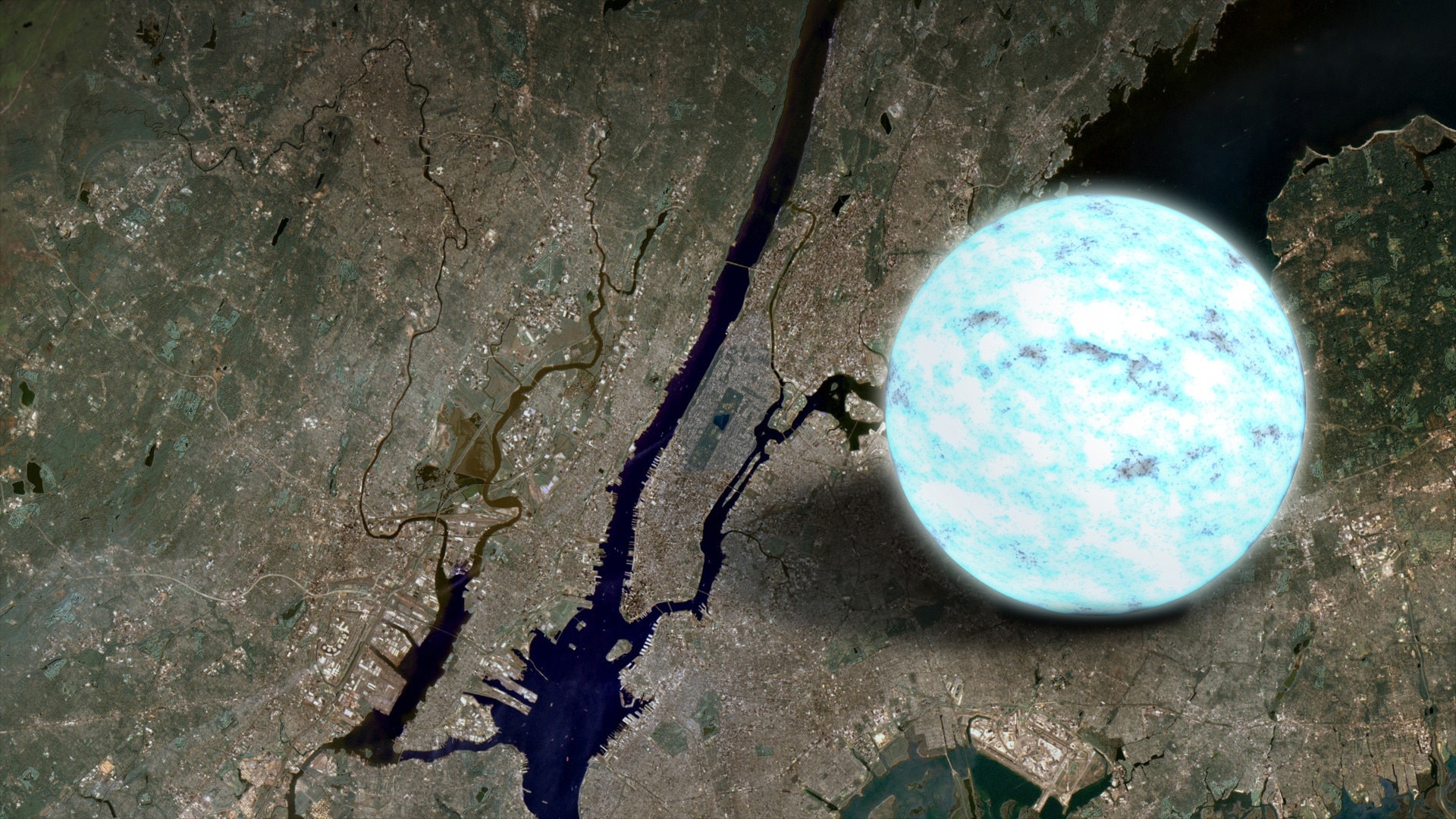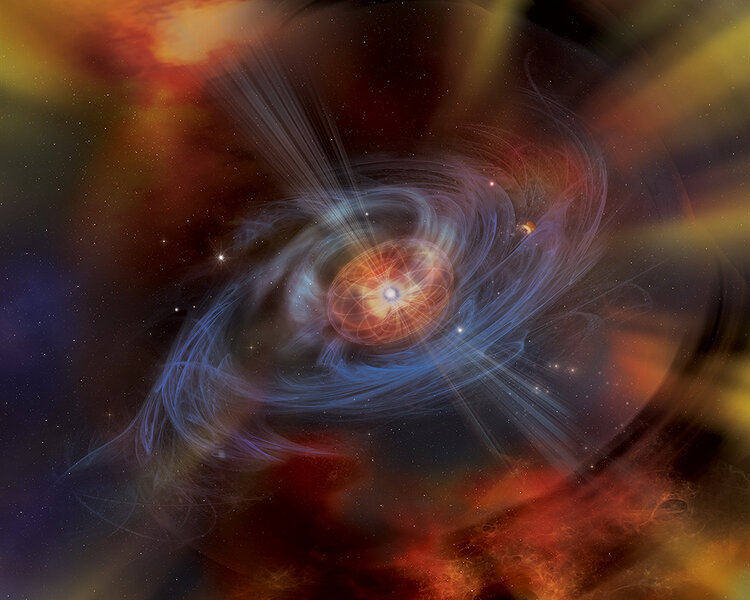Create a free profile to get unlimited access to exclusive videos, sweepstakes, and more!
Neutron stars may be quite a bit bigger than previously thought

It's a little bit weird how the very small is connected to the very large in our Universe. At some level it makes sense, since everything is made of subatomic particles, but in general the specifics of those particles is only important on incredibly small scales; on more human scales more macrophysical laws come into play and dominate.
But an experiment recently run on the size of a lead nucleus has big implications for neutron stars — literally. In a nutshell, the measurements of the nucleus of an atom of lead show that neutron stars are larger than previously thought; we thought they were 24 kilometers in diameter on average, but may actually be more like 28. That's a pretty big deal.
A lead atom, like all elements, is defined by the number of positively charged protons in its nucleus: 82. But it also has uncharged neutrons in its nucleus as well, and that number can change. The most common atoms of lead have 124, 125, and 126 neutrons in them. These varieties are called isotopes, and they're given a number referring to the total number of protons plus neutrons in them, so those isotopes above are called lead-206, lead-207, and lead-208 (sometimes abbreviated with the symbol for the atom and the number as a superscript, like 207Pb).
Scientists are very interested in how those particles are arranged in the nucleus. For example, lead-208 has 126 neutrons in it, and many of those are mixed in with the protons in the nucleus. But quite a few are left over, forming a "skin" of neutrons around the nucleus like a chocolate coating in candy over a mix of chocolate and nuts.
Scientists can probe the nuclei of atoms by hitting them with beams of electrons, which are scattered off of the protons in the nucleus like BBs shot at steel ball. The thickness and density of the protons in the nucleus can be measured that way.
It's hard to measure the neutrons, though, because neutrons don't interact well with electrons. However, taking advantage of some quantum mechanical rules, scientists were able to use an electron beam to measure the thickness of the skin of neutrons in the lead-208 nucleus more accurately then before. The details are fantastically complicated — it's experimental quantum mechanics, after all — but what they found is that the neutron skin around the lead nucleus is 0.283 ± 0.071 femtometers. A femtometer is one-quadrillionth of a meter, or if you prefer a trillionth of a millimeter.
That means the neutron skin around the nucleus is 0.283 trillionths of a millimeter thick, or, written out, 0.000000000000283 millimeters. That's a thin skin.
Note the uncertainty (±.071) is about 25% of the thickness, which is large, but far better than previous attempts. The important fact here is that this new measurement is significantly larger than previous ones (which put it closer to 0.15 femtometers).
OK, so neutrons in a lead nucleus form a thicker skin than thought. So what?
Neutron stars are the remains of superdense cores of massive stars after the outer layers explode in a supernova. While that gas blasts away at high speed, the core of the star collapses. The detailed physics is again complicated, but protons and electrons (and antineutrinos, if you want to try this at home and need the list of ingredients) smash together to become neutrons. What's left is a sphere of fiercely dense neutronium, a fluid made of neutrons that has a density of over 100 million tons per cubic centimeter. That's like taking a gigantic pile made of all the automobiles in the United States and crushing it down to the size of a single six-sided die.
So yeah. Dense.
Neutron stars are made of neutrons, and can in a sense be thought of as gigantic atomic nuclei. That's where the new numbers come in. If neutrons behave differently than thought before it means neutron stars do too. The new work uses the equations governing how neutrons behave to show that neutron stars are bigger than thought before. While it was thought they might be from 20 – 24 kilometers wide — roughly the size of a decent city — they may actually be more like 26 – 29 km wide — roughly the size of, well, a slightly larger city.
That difference may seem small, but it has implications. Neutron stars have powerful magnetic fields and can spin rapidly. We call these pulsars, and they can emit vast amounts of energy, enough to be detected across intergalactic distances, for example, and to heat up the expanding debris of a supernova, speeding it up.
Another kind of neutron star is called a magnetar, where the magnetic field is far stronger, like a quadrillion times the strength of Earth's. These can sometimes have absolutely staggeringly huge eruptions; in 2004 one such explosion from a magnetar half the galaxy away from us swept over our planet and physically affected our atmosphere.
Also, colliding neutron stars may make a large amount of elements in the Universe, like strontium, plutonium, and even platinum, silver, and gold.
So how neutron stars behave is rather important to astronomy. They can affect entire galaxies, and certainly our civilizations here on Earth.
They are 40 quintillion — 40 million trillion — times bigger than a single lead nucleus, yet what we've learned about neutrons from that nucleus profoundly affects what we know about neutron stars on a scale nearly unimaginably larger.




























